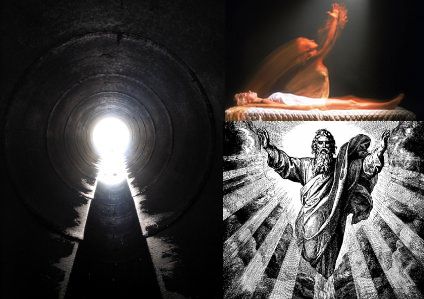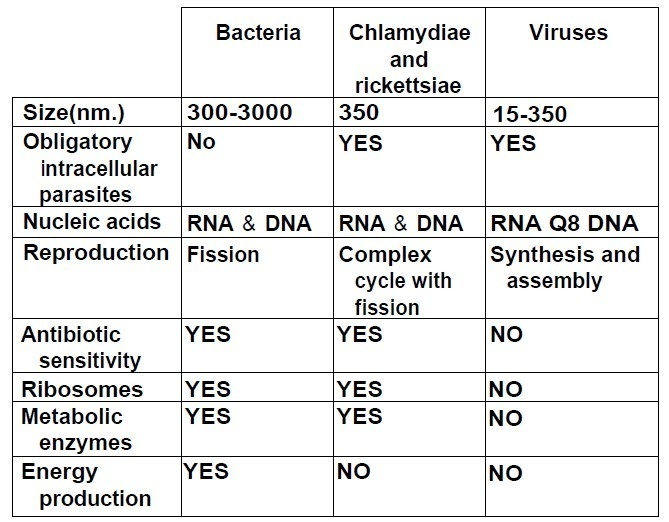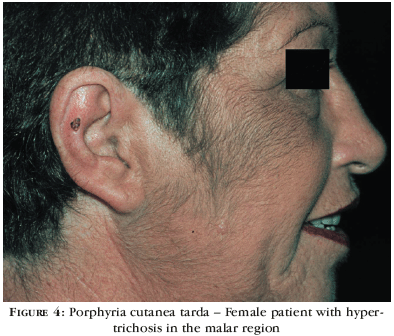Near Death Experience(NDE): Medically Explained

Near-death experience (NDE) is a wide range of experience in which someone close to death or suffering from some trauma or disease that might lead to death perceives events that seem to be impossible, unusual or supernatural.
“I floated right out of my body. My body was here, and I just floated away. I looked back at it once, and it was there. It was very peaceful and light and beautiful. And I remember like, when you see someone you haven’t seen in a while, you want to hug them, and I remember trying to reach out to my ex-husband, and he would not take my hand. And then they floated away. I was overwhelmed by massive energy, powerful, very powerful energy.”
The Core Experiences of the Near Death Experiences:
- Light at the end of the tunnel
- Vision of bright white light
- Encounter with beings dressed in white
- Reunion with loved deceased ones
- Hearing loud noises
- Out-of-body experience (OBE) and a feeling of being removed from the world
- Life review (a person rapidly sees much of his or her life history in chronological sequence and in extreme detail)
Dr. Sam Parnia explains, “death is not a specific moment. It is a process that begins when the heart stops beating, the lungs stop working and the brain ceases functioning – a medical condition termed cardiac arrest, which from a biological viewpoint is synonymous with clinical death.
Clinical Events Associated with Near Death Experience:
- Cardiac arrest in Myocardial Infarction
- Septic or anaphylactic shock
- Coma
- Near-drowning
- Asphyxia
- Electrocution (Stopping of life by electric shock)
Hypotheses for Near Death Experience:
Birth Memories:
- Moving rapidly through a dark tunnel: Movement of the neonate through the birth canal in the process of being born.
- Out of Body Experience: The pre-natal environment could be considered by the fetus to be an extension of his own body. The departure from this watery environment to a dry air breathing environment could result in a depersonalization experience interpreted as being out of one’s own body.
- Appearance of Being of Light: The brightness of the delivery room is in contrast to the dark uterine environment and the clothing of the hospital personnel, who helped with the delivery and care appear bright.
- Intense feeling of love, joy and peace: The sufferings endured while being born are over and his repose is restful and peaceful after having endured the hardest ordeal of his life.
Dying Brain Theory:
All NDEs have essential core elements which are the same because all brains die in the same way. It is not because the dying person is traveling toward a beautiful afterlife, but because when the neurotransmitters shut down, the white light illusion appears to everyone near death.
Neurochemical Theory:
Dying secrete endorphins, hormones which act on the CNS to suppress pain, and give people a sense of peace and elation. According to another theory, there is a massive release of DMT(Dimethyltryptamine) from the pineal gland acting on N-methyl-D-aspartate (NMDA) receptors prior to death or near-death. Ketamine can produce feelings of being out of the body and sensations as of travel through a dark tunnel into light, believing that one has died, or communing with god.
Anoxia and Hypercapnia
People who report near-death experiences have elevated levels of carbon dioxide in their blood and may be suffering oxygen deprivations.
Mountaineers and airforce pilots have described experiencing some of the features of a near death experience.
The major features acceleration-induced hypoxia shares with NDEs are tunnel vision and bright lights, floating sensations, pleasurable sensations, brief fragmented visual images, and rarely a sense of leaving the body.
Psychoanalytical theory
When a person’s life is threatened, the ego activates a psychological defense mechanism creating the elements of the core experience. People faced with an unpleasant reality of death and illness attempt to replace it with pleasurable fantasies to protect themselves.
Temporal lobe theory
Stress of being near-death, or thinking that you are near-death, may in some way cause the stimulation of temporal lobe. This theory is based on the similarity of NDEs to temporal lobe seizure phenomena.
Multifactorial theory:
- Sensory isolation or bodily malfunction lead a person to feel detached from the body
- Then endorphins lead to analgesia and feelings of peace
- Then with increasing anoxia, the visual system may be compromised, producing the illusion of a tunnel and lights
- Temporal lobe seizures stimulate a life review
- While visions of deceased persons and of another realm are simply hallucinations produced by expectations of what will happen at death
A recent Dutch study, only 18% of those who were clinically dead had an NDE. This mean 82% of those who experienced clinically death, experienced absolutely nothing. It may be that these people DID have an NDE, but don’t remember it, just as many people do not remember their dreams.







2 Comments
If I want to know if an nde is real or not I ask someone who has had one, not the person who did’nt.
Enough people have had these experiences for me to get a good sense if they are real or not. They are.
People who have had these experiences span the spectrum. Doctors, lawyers, pilots, mechanics, artists, non artists, non mechanics. You name it, they have had it.
If this ‘experience’ happened to one person and one person only and that person did not have a job and voted Republican then of course they could easily be dismissed as wishy-washy. But not when 10’s of millions of people have had similarily profound – life changing exeriences thay tell us are real – and demonstrate that they are real by becoming more loving and caring in their behaviour.
It’s time for scientists to show a little humility and and try not to tell them what they did or did not experience. They are not asking, so don’t tell, and certainly don’t presume to know. After all, it was their experience. Not the scientist’s. Just listen and learn.
The Science is not saying the experiences are not real–the brain does indeed perceive a tunnel and sensations of being disconnected with the body. But simply because something is perceived to happen does not mean it actually happens.
For thousands of years, people believed the sun circled the earth–afterall that is what we perceive whenwe observe the sun.
Comments are closed.